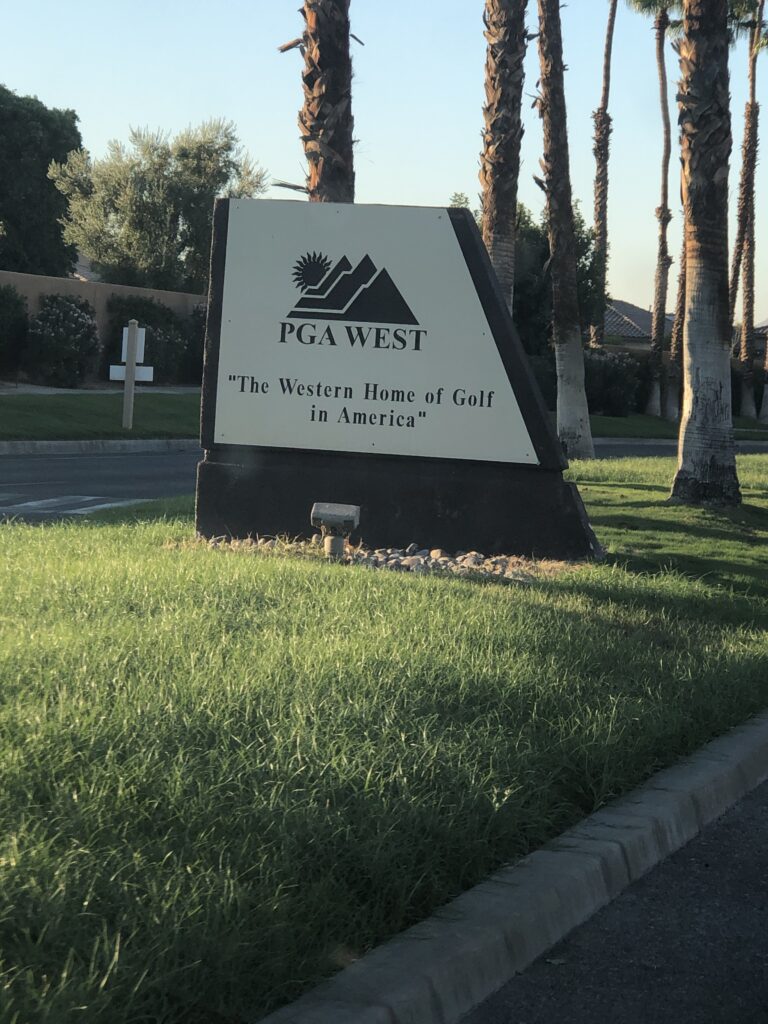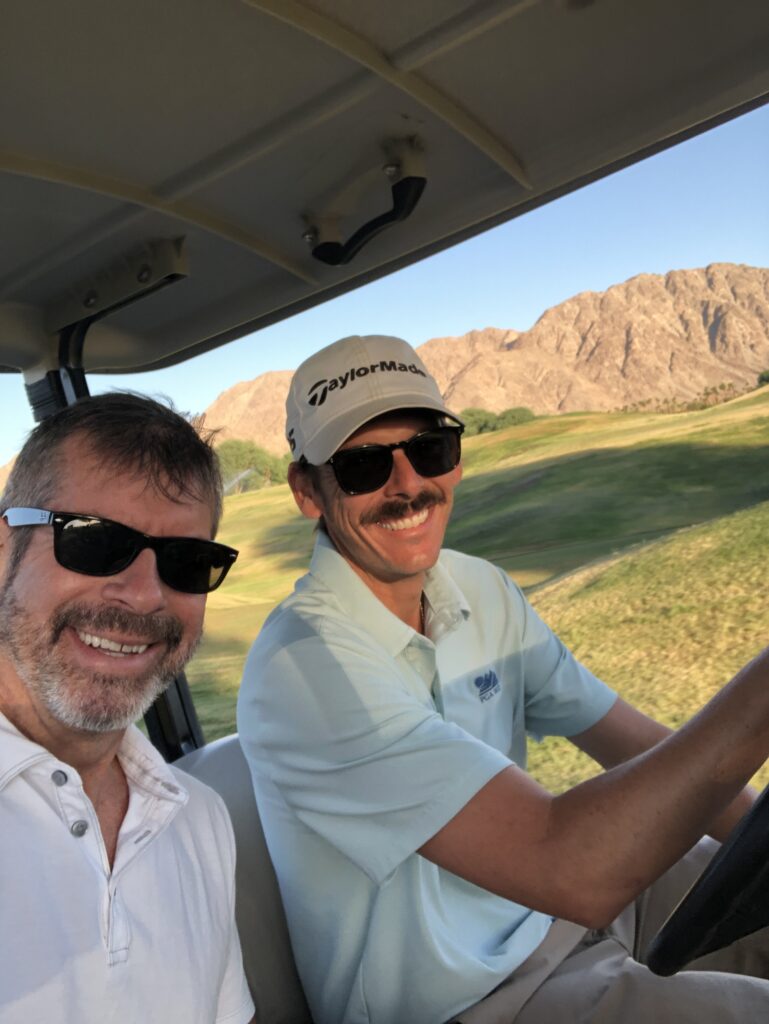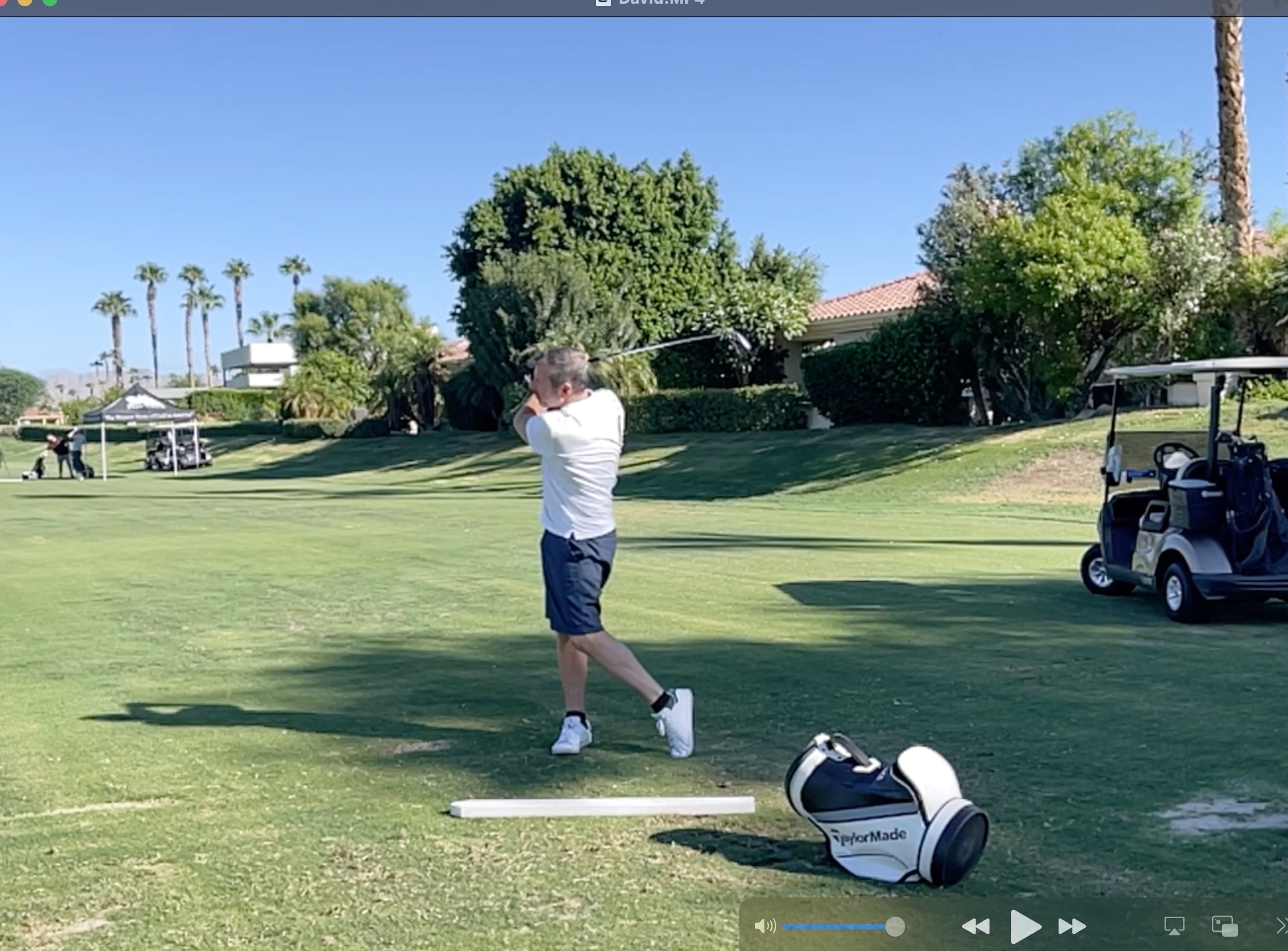It’s been almost thirty years since I played golf. I don’t have that kind of time or money.
So I got a little nervous last week when my friend Eric invited me to his country club in Los Angeles. I found myself looking for an out even though there was every reason to say yes – he’s helping me network for business, he’s picking up the tab, and my parents live nearby so I’ll be able to visit them on my way home.
But saying yes means I have to relearn the game. In two weeks.
Winston Churchill once said, “Golf is a game whose aim is to hit a very small ball into an even smaller hole, with weapons singularly ill-designed for the purpose.” Bobby Jones added, “Golf is assuredly a mystifying game. It would seem that if a person has hit a golf ball correctly a thousand times, he should be able to duplicate the performance at will. But such is certainly not the case.”
You can’t learn golf by watching YouTube videos. This is a perfect time to practice what I preach.
Open-Source Learning Step #1: Find an Expert Mentor
Two weeks is nothing for a sport as physically and psychologically tricky as golf. I needed help. A quick search led me to Bryan Lebedevitch, Director of Instruction at PGA West. Bryan was named one of America’s Top 100 Instructors by Golf Digest. I emailed Bryan with the subject header: “Can you teach an old dog new tricks?”
Bryan answered right away, but he was out of town, so he introduced me to PGA West instructor John Battaglia, who has also been recognized as one of California’s best instructors.
John scheduled a time for me and I drove out to meet him.



Open-Source Learning Step #2: Honest Self-Assessment
I told both Bryan and John the truth. It’s been a long time since I swung a golf club and I wasn’t very good at it in the first place.
Open-Source Learning Step #3: Etch-A-Sketch Mind
Adults have different learning challenges than young people. Often we have to unlearn habits or forget inaccurate ideas to make room for better information. Just because we’ve been doing things a long time doesn’t mean we’ve been doing them right, or even that we know what we’ve been doing at all. (I published this post, and you clicked a bunch of symbols to find it, but I highly doubt either one of us knows exactly how the internet works.)
Relearning and mastering the basics is fundamental for even the most successful athletes. In high school I worked for Hall of Fame UCLA Men’s Basketball Coach John Wooden. His teams won 10 NCAA titles. The top high school players in the country came to play for him, and I can imagine their reactions on the first day of practice, when Coach taught them how to put on their shoes and socks. It doesn’t matter how good you are if you have a blister.
So I wasn’t entirely surprised that the first thing I did needed correcting. John watched me pick up a club, frowned, and twisted my hands on the grip until they felt all wrong. I had to completely ignore the impulse to move my hands back to a comfortable place, but that became a little easier when I hit a few balls and they went in the general direction I aimed.
Open-Source Learning Step #4: Focus
One of my favorite things about sports is the way they absorb you. If you stop paying attention while you’re skiing or boxing, you’re going to pay a price. I loved playing basketball at a competitive level because every moment required me to think, anticipate, react, and use everything I’d practiced.
Golf is a mental challenge for me because it’s so damn slow. There is way too much time to think. I stand over the ball but my mind wants to be somewhere else. I think about the time I’m wasting, all the other things I could/should be doing, how much I suck at this, how I still have love handles even though I’ve completed an Ironman Triathlon, how so many morons can ignore the effects of climate change… I’d be better off if the ball caught fire.
At the same time there is absolutely nothing going on, a ton of golf details also show up to compete for my attention: Where are my hands? Are my feet lined up? How far up/back is the ball? Is the club face aligned? Can I stop your back swing if I need to? Will my hips move on the follow-through? Am I going to keep snapping my wrists at the end of my swing? What the hell did John just tell me and why can’t I remember? Think maybe I’ll the ball sometime today, sunshine?
Stop. Let all that go. Waggle the club. Breathe.
When I teach or coach, I often begin with a guided meditation. These processes are all about intentionally placing our attention. The more we’re able to do that, the better we’re able to do everything.
Open-Source Learning Step #5: Reflection
As William Shakespeare put it in Julius Caesar, “For the eye sees not itself, but by reflection, by some other things.” I haven’t yet met the skilled person who got where they are without a mentor. Every top athlete knows the benefit of having a coach at every stage of their career. Why? Because coaches observe our real-time performance and help fine-tune our technique by offering insight from a different perspective.
John had the perfect setup to help me see, understand, and apply what he saw. Next to where I was hitting golf balls there was a tripod with a camera. A few feet away under a canopy, he had a laptop on a table where we could review the images together. He showed me my stance side by side with other students and pro players (all of whom have better posture than me). He analyzed video of my swing frame by frame and I could see the precise point where I went from “so far so good” to “oh boy that’s gonna suck.”

Open-Source Learning Step #6: Practice
Coach Wooden introduced me to a verse from Grantland Rice called “How to be a Champion”:
You wonder how they do it,
You look to see the knack.
You watch the foot in action,
Or the shoulder of the back.
But when you spot the answer,
Where the higher glamours lurk,
You’ll find in moving higher,
Up the laurel-covered spire,
That most of it is practice,
And the rest of it is work.
This afternoon I ran a couple errands and stopped at a practice range on my way home. It’s August in the desert, and the temperature was about 115 degrees. I took about 40 minutes to hit a bucket of 90 balls. I’m getting used to the uncomfortable grip. I’m more able to stop in the middle of my back swing. I only hit a few really bad balls, and I was nicer to myself about it. My last shot was close to perfect, even though it sailed way farther than I expected and I suddenly wondered how the hell I’m going to control for distance on the course next week.
I’m never going to be a golfer. I’m not even sure I like golf.
But I love learning.
_______________________________________________
If you have a good story about golf, or if you’d like to know more about how Open-Source Learning can help you or your organization, please Contact Me.
